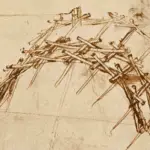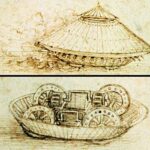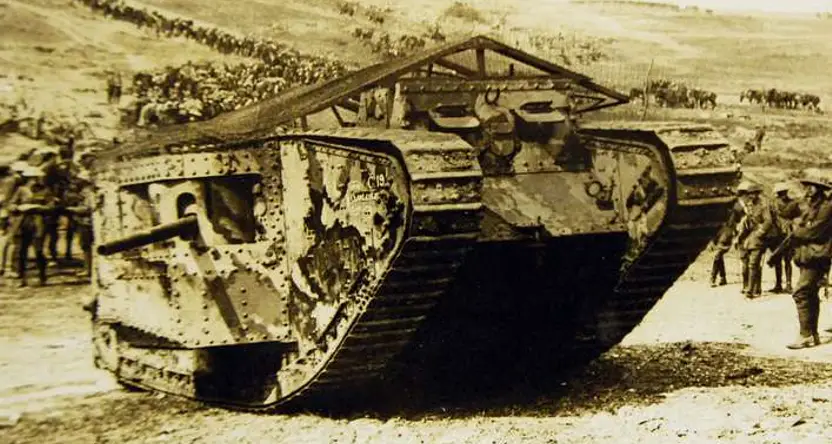
Mark I tank in World War 1
The Mark I Tank was the first operational tank in military history. This article will guide you through its development, design, and impact on World War I.
The Mark I Tank debuted during the Battle of the Somme in 1916, overcoming the harsh challenges of trench warfare and introducing a new era in combat.
This innovative armored vehicle featured a distinctive rhomboidal shape, which allowed it to traverse rugged terrains, including trenches and barbed wire.
Equipped with a 6-pounder cannon and side machine guns, the Mark I became a formidable presence on the battlefield, transforming military tactics globally.
Explore how the Mark I changed everything in armored warfare and beyond to understand the full story behind its creation and its profound impact.
Development and Production
The Mark I Tank, known for its groundbreaking design, became essential to warfare during World War 1. Its development involved various key figures and manufacturers; many of these tanks were produced for military use.
Origins and Design
The origins of the Mark I Tank date back to the Landship Committee, which Lieutenant Walter Wilson and William Tritton led. They aimed to create a machine that could cross trenches and rough terrain.
The design emerged from issues identified in their earlier project, Little Willie, which struggled with movement and trench-crossing abilities.
To solve these problems, they developed a rhomboid shape and added extended tracks, improving its ability to navigate rugged terrains effectively.
The tank was also equipped with male and female variants, distinguishing them by armament types. This effort highlighted a significant innovation in military technology, marking the beginning of armored warfare.
Manufacturers and Numbers
Significant contributions from British companies were made to the production of the Mark I Tank. William Foster & Co. was critical in manufacturing these tanks after the initial prototype, known as “Mother” or “Big Willie.”
Around 150 Mark I tanks were built during its time, with variations in armaments and specific design features. These tanks first saw action on 15 September 1916 at the Battle of Flers-Courcelette, marking their debut in combat.
As more were produced, tanks became iconic parts of British military efforts during World War I, influencing future tank designs and strategies used by military forces worldwide.
Technical Specifications
The Mark I tank, introduced by the British in World War I, featured innovative elements such as advanced armor and a powerful engine, which were crucial for its operational success in the war.
Armor and Armament
The Mark I tank’s armor, which ranged from 6 to 12 mm in thickness, was designed to protect it against small arms fire and shrapnel.
This level of protection was vital for withstanding the conditions encountered during battles like the Battle of the Somme. The tank featured both male and female variants.
The male variant was equipped with two 6-pounder naval guns and four .303-inch Hotchkiss M1909 machine guns, while the female counterpart carried six Vickers .303 machine guns.
This dual variant design was a tactical response to varying combat roles, allowing the British Mark I tank to engage both infantry and fortified enemy positions effectively.
Engine and Mechanical Systems
The Mark I was powered by a Daimler 6-cylinder petrol engine producing 105 horsepower. This engine enabled the tank to reach up to 3.7 mph on rough terrain, typical for World War 1 tanks.
The transmission system required a crew member to steer using a combination of brakes and gears. The tank’s tracks were a new development, essential for navigating the muddy and uneven battlegrounds.
Despite mechanical challenges and a high crew workload, the British Mark I tank 1916 proved its worth as a pioneering armored vehicle during WW1.
Operational History
The Mark I Tank had a significant impact on WW1 combat. Its introduction marked a turning point in military tactics, paving the way for advances in armored vehicles in the following years.
First Deployment
The Mark I Tank was first deployed on September 15, 1916, during the Battle of Flers-Courcelette, part of the Somme Offensive. This battle marked the first time tanks were used in combat, aiming to break the trench warfare stalemate.
Out of 49 tanks shipped, only 32 engaged effectively due to mechanical failures. Despite these setbacks, the deployment showcased the tank’s potential to traverse rugged terrain and disrupt enemy lines.
The use of tanks during WW1 represented a bold shift in military strategy and British heavy tanks of the First World War.
Battlefield Performance
On the battlefield, the Mark I Tank faced numerous challenges, including mechanical issues and vulnerability to artillery. Its tracks allowed it to cross trenches, but mud and rough terrain often caused breakdowns. The slow speed and limited armor made it susceptible to enemy fire.
Operated by an eight-person crew, the tank’s internal conditions were harsh, with extreme heat and fumes. Yet, the Mark I tank model demonstrated the potential of armored vehicles as effective tools in warfare by achieving surprise and confusion among German forces.
Modifications and Variants
Following its initial deployment, the Mark I Tank underwent several modifications to improve performance. Changes included adjustments to the armor and mechanical systems to enhance reliability.
Variants known as “Male” and “Female” tanks featured different armaments; Males had two 6-pounder naval guns, while Females were equipped with machine guns.
Further developments led to the Mark I Tank being succeeded by improved models, such as the Mark IV, which addressed many initial shortcomings and significantly enhanced battlefield effectiveness.
Comparing WW1 Tanks
The evolution of tanks during World War I was a testament to the rapid advancement in military technology, marked by incremental improvements and strategic variations. Among the most significant of these were the British Mark series tanks and the German tanks.
The Mark Series Tanks
| Model | Key Features | Use in Combat |
|---|---|---|
| Mark I | First armored vehicle designed for frontline combat. | Used in World War I |
| Mark II | Slight modifications to the Mark I. Primarily used for training. | No combat usage |
| Mark III | Improved armor protection and better living conditions for the crew. | No combat usage |
| Mark IV | Thicker armor, improved fuel systems, and more reliable weaponry. | Used in World War I |
| Mark V | New transmission system for easier control and increased speed. | Used in World War I |
| Mark VI | Designed, but never made it past the prototype stage. | No combat usage |
| Mark VIII ‘Liberty’ | Thicker armor, more powerful engine, a collaborative effort with America. | No combat usage during World War I, but used later |
Impact on Warfare
The Mark I Tank revolutionized military tactics during World War I, significantly changing battlefield strategies and future tank designs. Its introduction marked a pivotal moment in mechanized warfare with long-lasting impacts on tactics and technology.
Tactical Doctrine Evolution
The Mark I Tank forced a dramatic shift in military tactics. Before its debut, trench warfare dominated World War I. No Man’s Land was a perilous zone, nearly impossible to cross without heavy casualties.
Introducing the Mark I offered a new way to traverse this deadly terrain. Its ability to withstand small arms fire and barbed wire made it an asset in breaking the stalemate of trench warfare.
The British forces could outmaneuver entrenched enemy lines by integrating tanks with infantry advances. This tactic marked the first steps toward modern armored warfare.
The impact of tanks during WW1 forced military strategists to rethink combat, leading to today’s sophisticated combined arms tactics.
Influence on Later Tank Designs
The Mark I Tank set a precedent for future tank development. Its design, featuring tracks to navigate rough terrain and armor for protection, became standard in later models.
Although primitive by today’s standards, its core design elements are evident in tanks that followed. The Mark I’s success accelerated the advancement of tank technology. It influenced later models like the British Mark V and others worldwide.
The concept of supporting infantry with armored vehicles took root, shaping future innovations in armored warfare. For more insights into the legacy of the Mark I Tank, consider its transformative role in military technology.
The German WW1 Tank
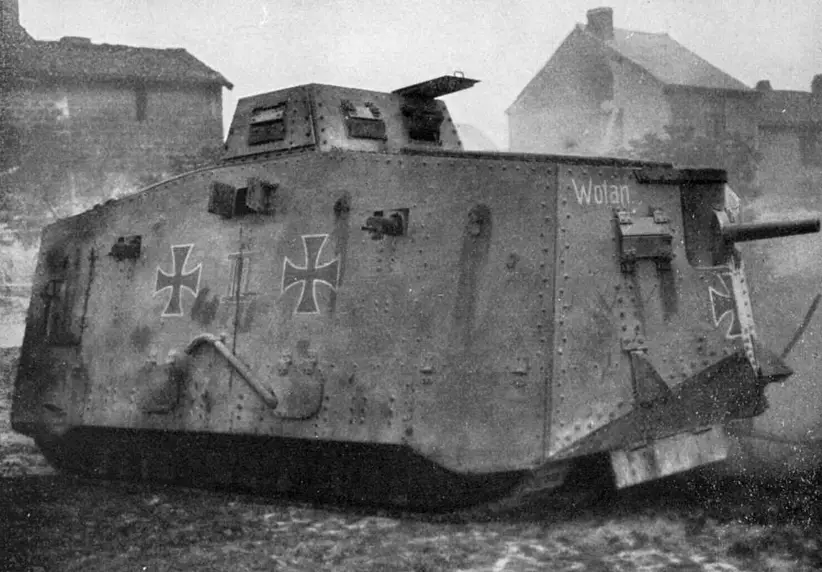
German A7V tank in World War I
Germany’s response to the British Mark series was the A7V.
Compared to the Mark I tank, the A7V was significantly faster, reaching speeds of up to 9 mph. It was also equipped with a main gun and six machine guns, offering a formidable mix of firepower.
However, Mark I and its successors had the advantage of being able to traverse difficult terrain due to their caterpillar track design. The A7V, in contrast, struggled with trenches and uneven landscapes.
From the imposing Mark I tank to the late arrival of Mark VIII, each iteration reflected a continuous process of learning and adaptation. They stood as symbols of the drive for innovation, much like the inventions of Leonardo da Vinci that pushed the boundaries of what was thought possible.
Similarly, the German A7V was a clear testament to the speed with which nations adapted to the changing nature of warfare during this period.
Looking at Tanks Throughout History
History has seen tanks evolve from the rudimentary designs of World War I to the technologically advanced machines of today. While there have been many formidable tanks, there have also been those that were less successful on the battlefield.
The Weakest Tanks
In WW1 tanks, the French FT-17 often comes to mind when discussing weaker models.
While revolutionary in its own right for introducing the classic turret design, the FT-17 was lightly armored and armed only with a machine gun or a light cannon, making it less effective against fortified positions and virtually defenseless against other tanks.
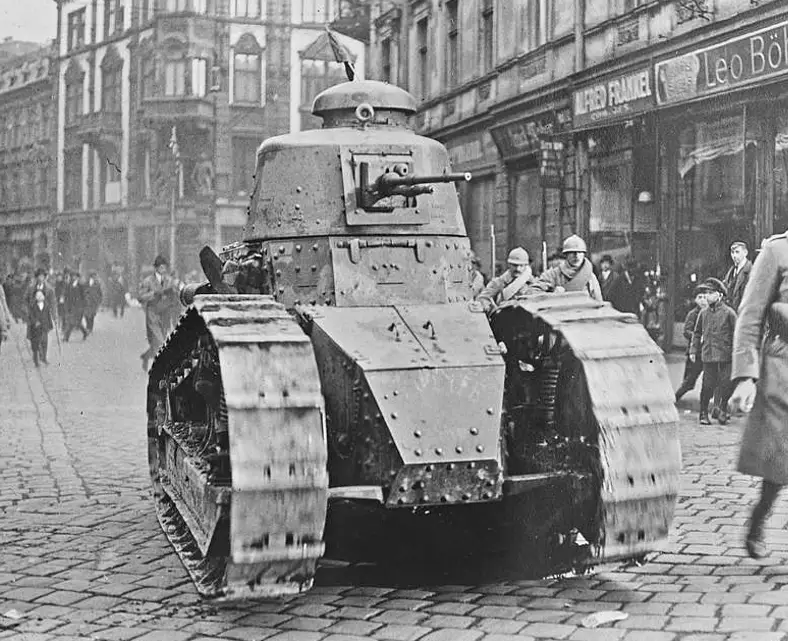
French FT-17 tank in World War I
Beyond World War I, the Italian L3/35 of World War II is often cited as one of the weakest tanks ever produced.
Despite its impressive mobility, the L3/35 was severely under-armored and under-gunned. Its twin machine guns provided little threat to enemy tanks or fortified positions.
The Most Effective Tanks
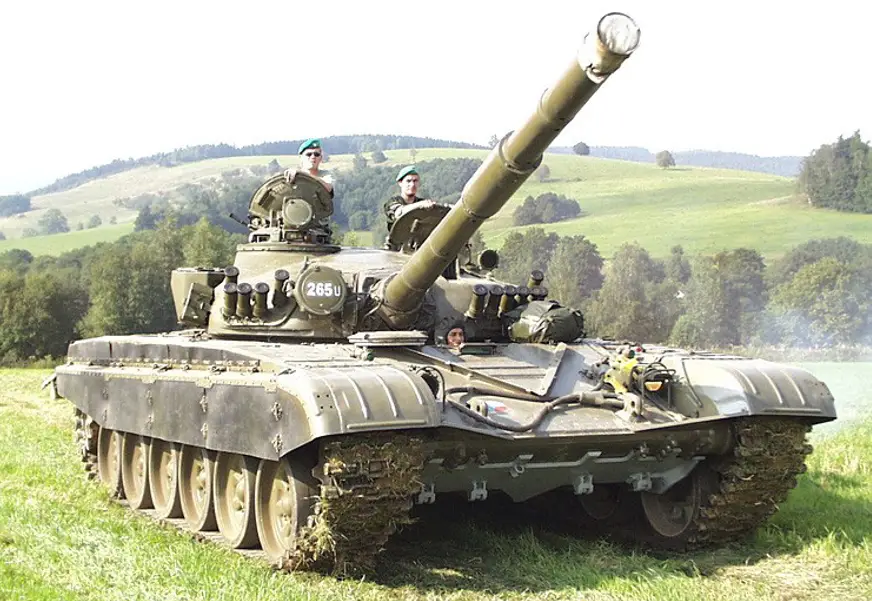
Soviet T-72 tank in World War II
The T-34, a Soviet tank from World War II, is often hailed as one of the most effective.
It combined a robust design with wide tracks (ideal for the Eastern Front’s harsh terrain), a powerful 76.2mm gun, decent speed, and sloped armor that increased the tank’s defensive capabilities.
The T-34 was a testament to the effectiveness of straightforward design and mass production, and it played a crucial role in the Soviet Union’s defensive and offensive operations.
Modern tanks in the post-WWII era, such as the T-72, stand out as one of the most effective tanks in the Soviet Union. With over 20,000 units produced since its introduction in the late 1960s, the T-72 boasts a powerful 125mm smoothbore gun, composite armor, and a compact design, making it one of history’s most widely used tanks.
The analysis of tank designs, from the weakest to the most effective, mirrors the trajectory of human innovation.
Each model, regardless of its success or failure, represents a stepping stone towards progress, much like how Leonardo da Vinci’s creations helped shape the future of human invention.
Final Thoughts
The Mark I Tank was a groundbreaking innovation in military technology during World War I. It represented the first operational combat tank, fundamentally changing the dynamics of warfare.
Designed to overcome the challenges of trench warfare, the Mark I broke new ground in armored vehicle design.
A revolutionary feature of the Mark I was its tracked design, which allowed it to cross difficult terrain. This made it an essential tool in breaking the stalemate on the Western Front.
The Mark I served as a model for future tank development by introducing armor and mobility.
Key Takeaways:
- Tracked Design: Enabled better movement across rough and muddy terrains.
- Impact on Warfare: Paved the way for modern armored warfare.
Frequently Asked Questions
The Mark I Tank was the first combat tank used in warfare, marking a significant development in military technology. Despite its groundbreaking design, the Mark I faced limitations that influenced future improvements.
Are there any Mark 1 tanks left?
Very few Mark I tanks remain today. Most have been lost, but a couple are preserved in museums.
Was the Mark 1 tank effective?
The Mark I Tank had mixed effectiveness. It could cross trenches but often faced mechanical issues.
What was the worst tank in WW1?
Among WW1 tanks, the French Schneider FT-17 often received criticism for its poor performance and mechanical failures.
What is the difference between the Mark I and the Mark IV tank?
The Mark IV featured improvements over the Mark I. These include better armor and a more reliable powertrain.
What is the rarest tank in the world?
The Char B1 and other prototypes from the interwar period are considered among the rarest tanks because they were produced in limited numbers.
How fast could the Mark 1 tank go?
The Mark I Tank reached a top speed of about 4 miles or approximately 6.4 kilometers per hour.
Why were tanks unsuccessful in WW1?
Tanks in WWI faced mechanical unreliability, slow speeds, and difficulties in rough terrains.
How many Mark 2 tanks are left?
Very few Mark II tanks survive today. Only a handful are in museum collections.
What was the best tank in WW1?
The Mark IV tank was the most extensively used tank during World War I, with the Mark V and FT tanks also demonstrating significant effectiveness.
How many German Tiger 1 tanks are left?
Just a few German Tiger I tanks remain. They are preserved in museums around the world.
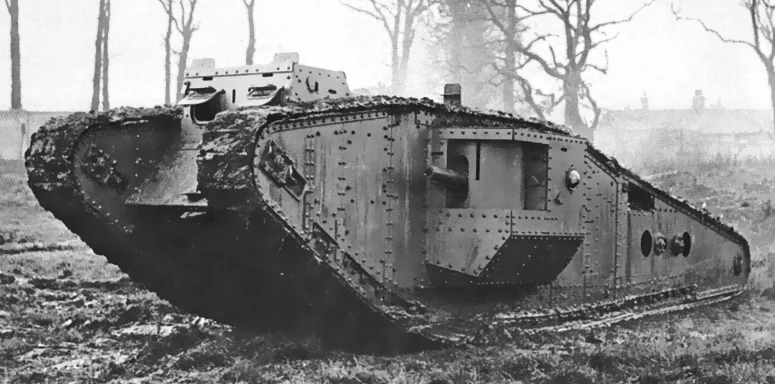
 I’m Leonardo Bianchi, the mind behind Leonardo da Vinci's Inventions. Thanks for visiting.
I’m Leonardo Bianchi, the mind behind Leonardo da Vinci's Inventions. Thanks for visiting. 